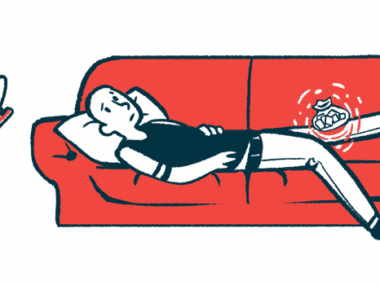Autism, ADHD May Be More Common in hEDS Children
Written by |

Note: This story was updated March 10, 2021, to provide an updated definition of autism spectrum disorder.
A higher frequency of attention-deficit/hyperactivity disorder and autism spectrum disorder was found in children with hypermobile EDS (hEDS) or hypermobility spectrum disorders (HSD), a Swedish study shows.
These findings support the need for routine screening of neuropsychiatric symptoms in young patients, researchers said.
The study, “Prevalence of ADHD and Autism Spectrum Disorder in Children with Hypermobility Spectrum Disorders or Hypermobile Ehlers-Danlos Syndrome: A Retrospective Study,” was published in the journal Neuropsychiatric Disease and Treatment.
hEDS and HSD — a broader definition used when causes such as hEDS are excluded — are both characterized by joint hypermobility, pain, and fatigue. Clinical practice indicates that behavioral challenges, hyperactivity, and autistic traits are overrepresented in children with these conditions.
Researchers in Sweden investigated the prevalence of psychiatric disorders, namely attention-deficit/hyperactivity disorder (ADHD) and autism spectrum disorder (ASD), among children with hEDS and HSD who were treated at Skaraborg Hospital. Their hypothesis was that these children have a higher risk of developing ADHD and ASD than the normal population.
The study included medical records from 201 children, mean average age 12 years (range from 6 to 18 years), treated from 2012 to 2018. The group included 88 boys and 113 girls.
Researchers recorded key symptoms, such as fatigue or pain, as well as diagnosis of ADHD and ASD. Notably, ASD is an umbrella diagnosis that includes a variety of developmental disorders that affect communication and behavior.
Among children, 113 were diagnosed with HSD and 88 with hEDS. The mean age at diagnosis was 7.9 years. Boys were diagnosed earlier than girls, a difference that was significant in the overall group (6.8 vs. 8.7 years) and in the HSD group specifically (6.8 vs. 9.3 years).
Regarding symptoms, pain was observed in 78% of children and gastrointestinal complications in 52%, with no significant differences between the hEDS and HSD groups. Fatigue was experienced by 57% of patients, significantly more in children with hEDS than in the HSD groups (71% vs. 46%).
Regarding psychiatric disorders, 16% of children had a verified ADHD diagnosis, while a further 7% were undergoing ADHD diagnostic investigation or had a suspected ADHD diagnosis.
ADHD diagnosis was significantly more common in the hEDS group than in the HSD group (23% vs. 11%). In children 15 to 16 years old, 35% of those with hEDS or HSD (13 of 37) had ADHD. A higher percentage, 46% (11 of 24), was found in patients age 17 to 18.
Local children from the Skaraborg area (152 of the total 201) presented a significantly higher proportion of ADHD cases (20%) compared to the general population (5%) and to local children ages 6 to 18 years (5.8%).
Autism was recorded in the medical records of 6.5% of all children and of 7.2% of children in the Skaraborg area, which was significantly higher than the proportion of local children, ages 6 to 18, diagnosed with ASD (2.6%).
Children diagnosed with ADHD showed a significantly higher proportion of fatigue (88% vs. 50%), sleep problems (78% vs. 36%), and urinary tract problems (28% vs. 10%) than children without the condition. In addition, sleep issues were also higher in the group of children undergoing ADHD assessment (71% vs. 36%).
No significant differences were observed in pain or gastrointestinal symptoms, but results showed a trend towards a higher incidence of reflux and gastritis — inflammation of the lining of the stomach — in affected children with ADHD (28% vs. 14%).
In the HSD group, children diagnosed with ADHD had significantly more fatigue, sleep problems, and reflux or gastritis. In those with hEDS, significantly more sleep and urinary tract issues were found in children with ADHD.
In children with ADHD, 56% (18 of 32) were being treated with central nervous system stimulants, and there was a trend towards fewer sleep problems in the treated group.
Children with ASD had significantly more sleep problems (92% vs. 42%) and fatigue (85% vs. 55%) than those without this diagnosis.
Finally, for both the hEDS and HSD groups, the degree of joint hypermobility, according to the Beighton scale, was slightly higher for children with associated symptoms such as pain and fatigue, but not significantly. Those with ASD had significantly higher Beighton scores (6.22 vs. 4.80 points) than children with no ASD.
The researchers noted several limitations to their study’s findings. These included not exploring exact diagnostic procedures or criteria, the impossibility of estimating the degree of pain, fatigue, or sleep problems through medical records, and the small number of patients with ASD.
Overall, “this study showed an unexpectedly large association between neuropsychiatric symptoms and HSD or hEDS. The frequency of sleep disorders was also unexpectedly high,” the investigators wrote. “The results of this study indicate that children with these diagnoses may need to be screened for neuropsychiatric symptoms and preferably also for sleep disorders.”





